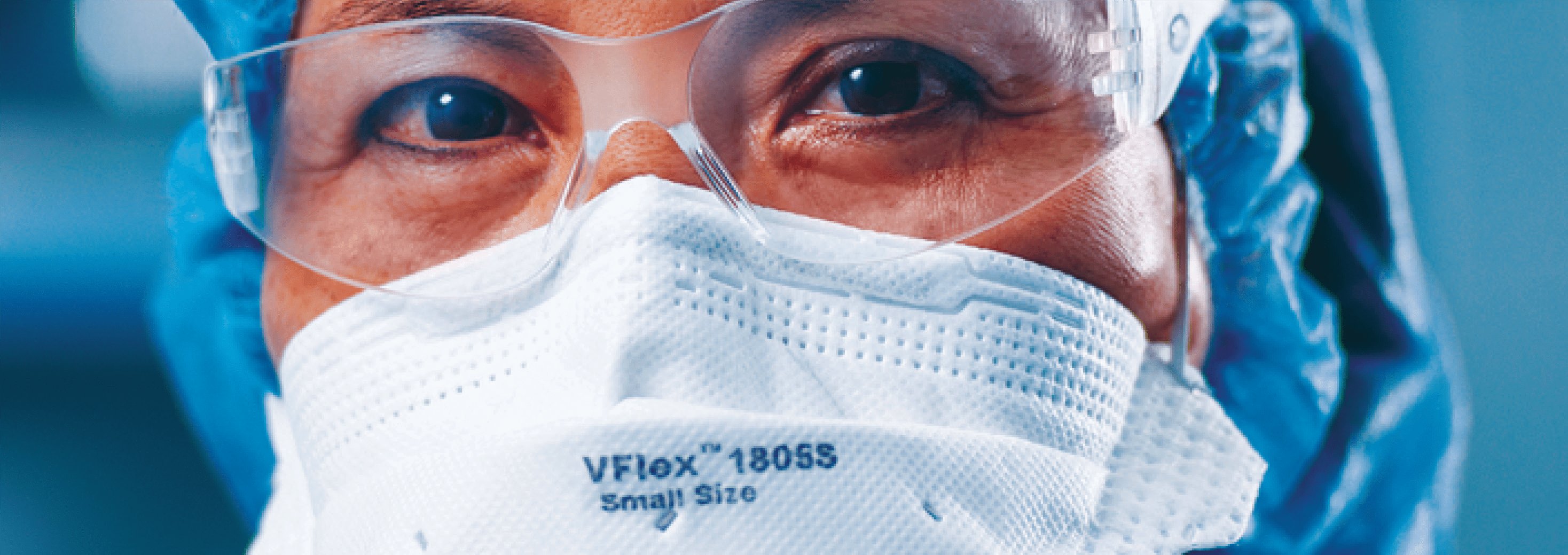EDITORIAL
JOURNAL OF THE FACULTY OF HUMAN MEDICINE 2020 - Universidad Ricardo PalmaDOI 10.25176/RFMH.v20i2.2913
PROTECTING HEALTH PERSONNEL IN THE COVID-19 PANDEMIC
PROTEGIENDO AL PERSONAL DE LA SALUD EN LA PANDEMIA COVID-19
Jhony A. De La Cruz-Vargas1,2,a
1Instituto de Investigación en Ciencias Biomédicas, Universidad Ricardo Palma, Lima -Perú.
2ISPOR-Perú.
aPHD in Medical sciences.

The epidemic and pandemic of COVID-19 constitute an unprecedented public health emergency, it arrived in Latin America, first in Brazil, then in Ecuador; The first cases in Peru were registered as of March 6, 2020(1). The correct response of the Government of Peru decreed a state of national emergency and mandatory social isolation, initially for 14 days, with the aim of reducing the exposure and transmission of the Coronavirus. It assigned economic funds for 3 million poor families in Peru, during social isolation(2).
The repercussions of COVID-19 are huge, at a social, economic, cultural, and educational level, of course, on the country's health system and your staff. Borders, universities, shops, restaurants are closed. The Pension Fund Administrators (AFP for its acronym in Spanish) announced to be affected quickly, generating significant losses to users. All of this is unpredictable and, just the tip of the iceberg.
Now more than ever, doctors and health workers are the most valuable resource in every country.
The picture is clear, as millions of people around the world stay home to minimize the spread of coronavirus and severe acute respiratory syndrome, doctors and healthcare workers prepare to do just the opposite; they will go to hospitals, clinics and health centers, putting themselves at high risk of COVID-19. Experiences in China and Italy show that 20% of health workers were infected and only in China, 22 of them had died(3).
The situation in hospitals is complex. There is Not only and intense pressure in the triage services, but physical and mental exhaustion, the torment of difficult decisions and the pain of losing patients and colleagues appear, all this in addition to the risk of infection.
Medical staff members while waiting for equipment, treating that they may be infected, or receiving equipment that may not comply the requirements. In addition to concerns about their personal safety, health workers are anxious about the risk of transmit the infection on to their families. As if that were not enough, health workers who have elderly parents or young children at home will be drastically affected by the whole situation.
It is probable that global health care systems could be operating at above-maximum capacity for many months. But it is clear that healthcare workers, unlike ventilators or wards, cannot be manufactured urgently or operate at 100% occupancy for long periods.
It is essential that governments view doctors and health workers not simply as chess pieces, but as human persons, with families, with dreams and emotions. Within the global response, the safety of health workers must be guaranteed. Proper provision of PPE is only the first step; Other practical measures should be considered, including canceling non-essential events to prioritize resources, food provision, rest, and family and psychological support. Table 1shows the reality of cases of COVID-19 infection in health personnel as of March 20, 2020.
Today it's our turn about to take care of them.
Let's take care of those who took care of us in the past, take care of us in the present and will continue to take care of us when the Coronovirus-19 pandemic has passed.
Table 1. Cases of COVID-19 infection in health satff, Peru (on date 03/20/2020 - 7:00 p.m.).
| Professional/occupaction | EsSalud | Minsa | PNP | Private | Other | Total | % |
| Resident Doctor | 4 | 3 | 1 | 8 | 33,33 | ||
| General Doctor | 2 | 3 | 2 | 7 | 29,17 | ||
| Nurse | 1 | 1 | 1 | 3 | 12,50 | ||
| Medical specialist | 1 | 1 | 2 | 8,33 | |||
| Nursing Obstetric | 1 | 1 | 4,17 | ||||
| Dentist | 1 | 1 | 4,17 | ||||
| Psychologist | 1 | 1 | 4,17 | ||||
| Nursing assistant | 1 | 1 | 4,17 | ||||
| Total | 9 | 7 | 2 | 2 | 4 | 24 | 100,00 |
Correspondence: Jhony A. De La Cruz Vargas.
Address: INICIB, Facultad de Medicina Humana, Pabellón J, Edificio Administrativo, 2do piso. Avenida Benavides 5440, Surco, Lima - Perú.
Telephone: 708-0000 / Anexo: 6016
E-mail: jhony.delacruz@urp.edu.pe
BIBLIOGRAPHIC REFERENCES
